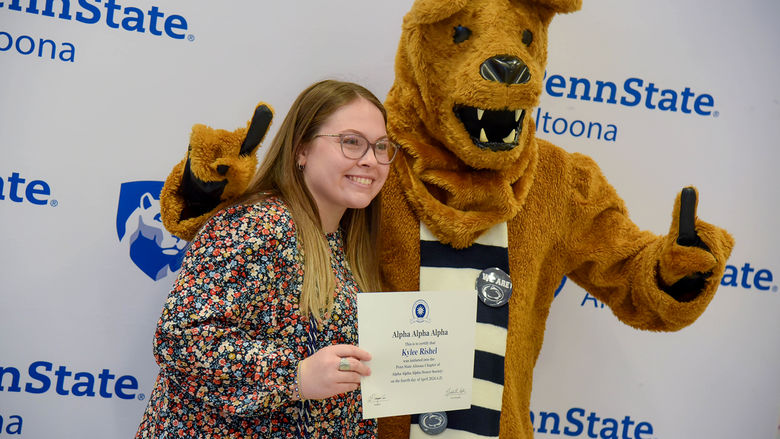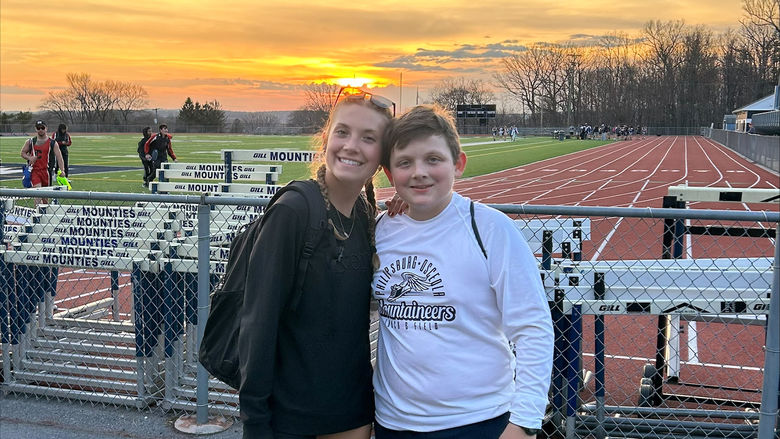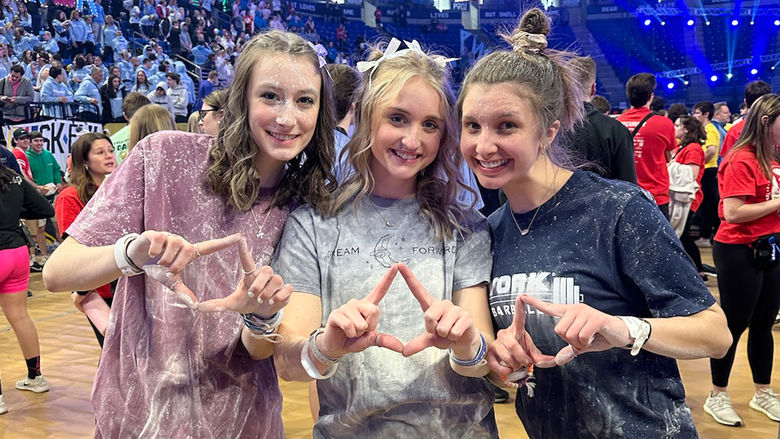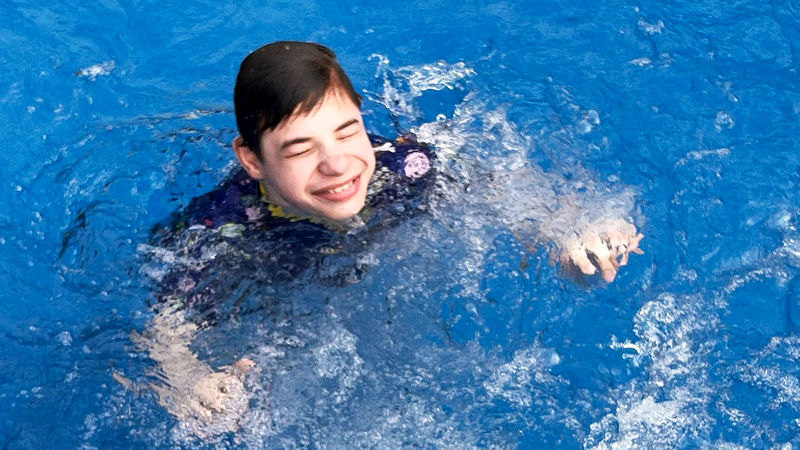

This dialog contains the full navigation menu for this site.

In 2010, Scott and Shelley Lill were preparing for the birth of their son. They were also preparing for his death.
Doctors had informed them that something was genetically wrong with their baby, and he was not expected to live.
When he arrived, Scott and Shelley named him Thomas.
Thomas reached his first birthday. Then his second. Then his fifth and tenth.
Thomas is thirteen now, and he and his family are providing a human angle to one Penn State Altoona biology course.
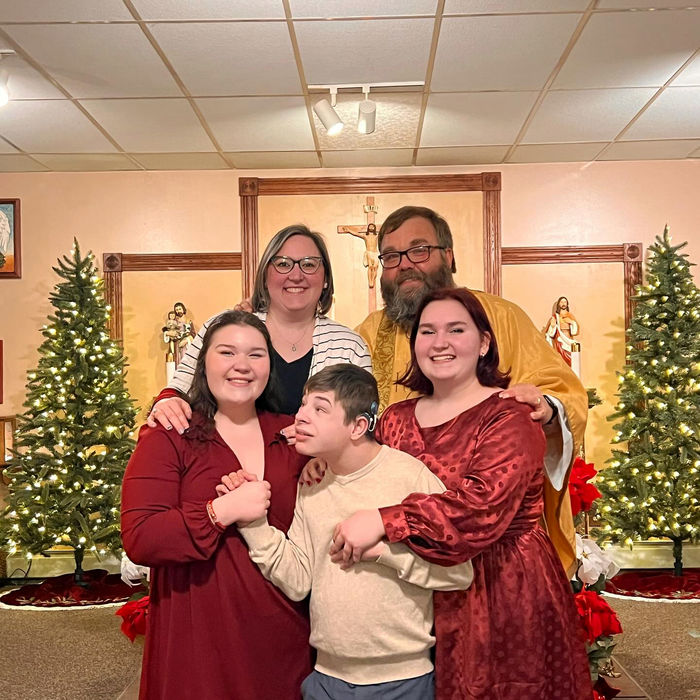
The Lill family celebrates Christmas. From left to right: Clare, Shelley, Thomas, Scott, and Anna.
Biology 460 is an upper-level course in human genetics taught by Dr. Laura Palmer, associate professor of biology. This past fall was her third time teaching the course, but her first bringing the Lill family into it.
“In a class like this, it’s very easy to get lost in the molecular details at the DNA level and forget the big picture. I wanted to remind students that as we talk through conditions caused by different defects in DNA, individuals with these defects are people first, not just a list of symptoms or diagnoses.”
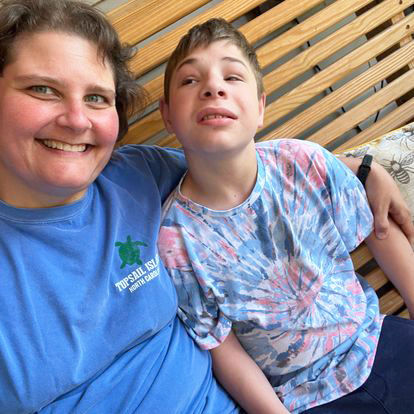
Best friends: Thomas and Laura Palmer, associate professor of biology at Penn State Altoona
Palmer’s friendship with the Lills brought not only some unique insight into the course but also an actual connection to a family dealing with the ramifications of a severe genetic disorder.
Over the course of the semester, there wasn’t a class in which students weren’t able to take textbook concepts and relate them back to Thomas’s case. Not surprisingly, they became more and more curious about and invested in him—just what Palmer hoped for.
So, who exactly is this special young man?
Thomas Lill is in the eighth grade. He loves McDonalds and McNuggets, swimming, climbing, and dancing. He also loves pizza and candy, specifically tootsie rolls, Hershey bars, and Twizzlers.
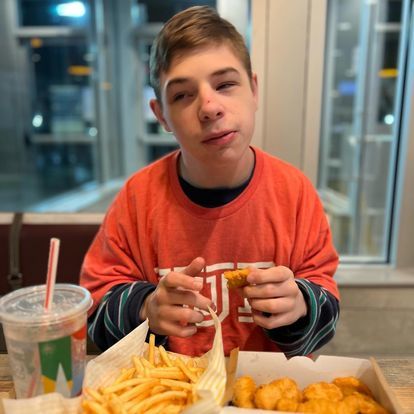
Thomas loves his chicken nuggies!
Thomas has two older sisters, Anna and Clare, and an older brother, Daniel, who passed away an hour after birth.
It wasn’t until he was eight that, after genetic testing at the Children's Hospital in Seattle, doctors discovered that Thomas has a mutation in his KIF4A gene, which is important for proper fetal development. They were able to confirm that Daniel had the same mutation. As far as is known, Thomas is the only person with this particular mutation who is alive, making him one in tens of millions.
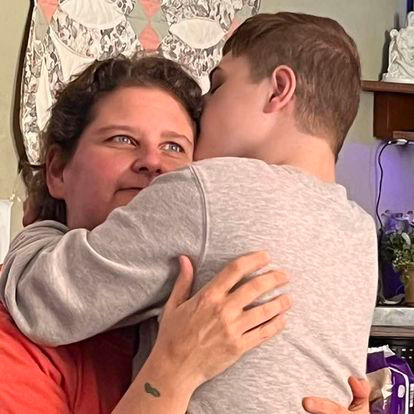
Some of his symptoms include deaf-blindness, a small cranium, brain malformation and intellectual disabilities, epilepsy, and polycystic kidneys. He is also nonverbal, so his main method of communicating is through touch and smell. He often puts his hands around a person’s throat to feel the vibrations as they speak. He loves to rock with others in the recliner in his bedroom: the physical motion is soothing to him and is also another way to interact with the world.
As she built the course, Palmer ideally wanted to bring students and the Lills together in person. But being protective of Thomas and his family, she needed to be certain that they wouldn’t feel on display.
“There needed to be a connection and something more than just plain curiosity. I wanted it to be a meaningful and positive experience for everyone.” After a few months of teaching and getting to know students in the course, Palmer felt certain that it would be. “They are smart, and they're curious. They're great students, but more importantly, they are really good humans.”
Four of the six students were able to spend a Saturday evening in November at the Lill home. It was light and informal, just some food and a few hours of chatting with Scott and Shelley, meeting Anna and Clare, and of course, Thomas himself.
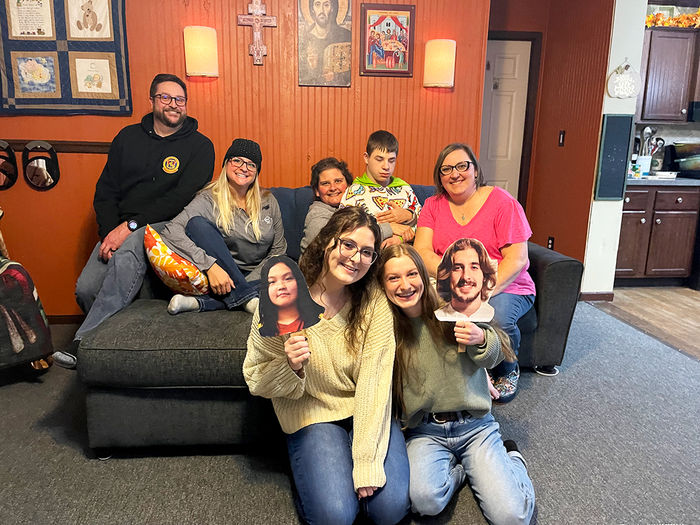
Four Penn State Altoona biology students were able to hang out with Thomas and his family one evening in November.
Left to Right: Back row—Kyle Rennell, Nicole Flanders, Laura Palmer, Thomas, Shelley. Front row—Rachel Sleeth, Hannah Roesch. Students there in spirit—Joyce Zheng, Dylan Hartmann.
“They're just the kindest, most fantastic people,” says Kyle Rennell, who is studying to become a physician assistant. “Scott and Shelley were so welcoming. I’m grateful that they opened their home to us and trusted us with their son.”
Palmer says Thomas immediately took to each student as he was introduced to them, giving big hugs and taking them to his bedroom to rock with him.
Unsure of what to expect, Nicole Flanders had been a bit nervous but was quickly put at ease. “I just put my hands out to him, and it was so natural and comfortable. I rocked with him for about ten minutes, and it was just really heartwarming.”
For Palmer, watching some of her best students interact so genuinely with some of her favorite people was just what she’d hoped for. “It was exactly what I had envisioned, that there would be a real connection. That’s what happened, and it was beautiful.”
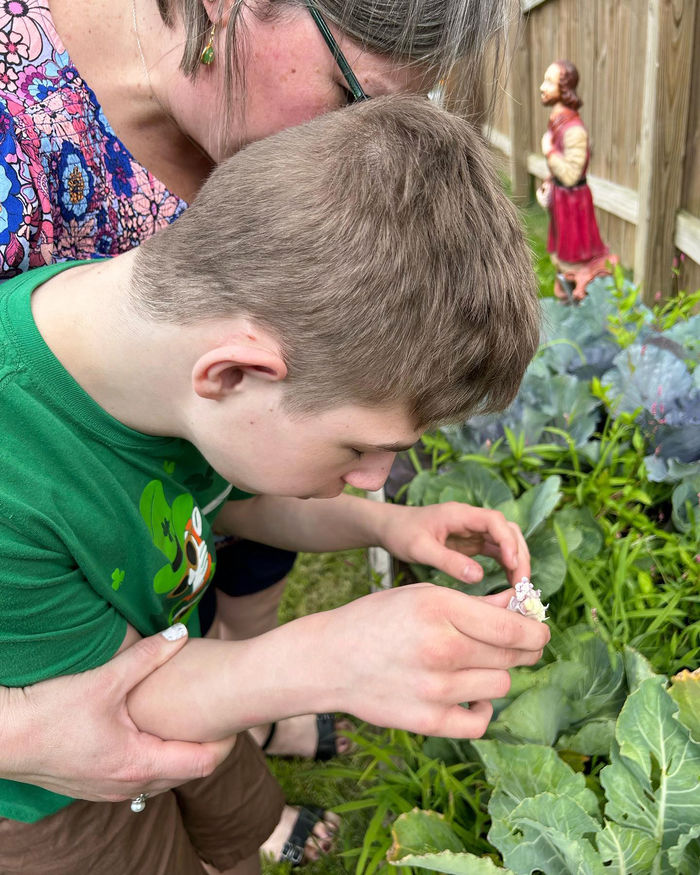
Scott and Shelly answered questions and spoke candidly about their day-to-day life and the challenges they face. They shared their experiences and frustrations with the healthcare system, inclusivity, and schooling. They also talked about trying to be good parents to two other children and good partners to each other.
“We were able to see into the most vulnerable parts of a family with a medically complex member,” says Rennell. “This was a learning experience we could never get in a classroom.”
Many of the students in this course, past and future, are headed for careers in health care. They will be interacting with adults and children who have rare diseases and genetic anomalies and their families: this was a big factor in the Lills allowing Palmer to use them as the basis for the class and for opening their home.
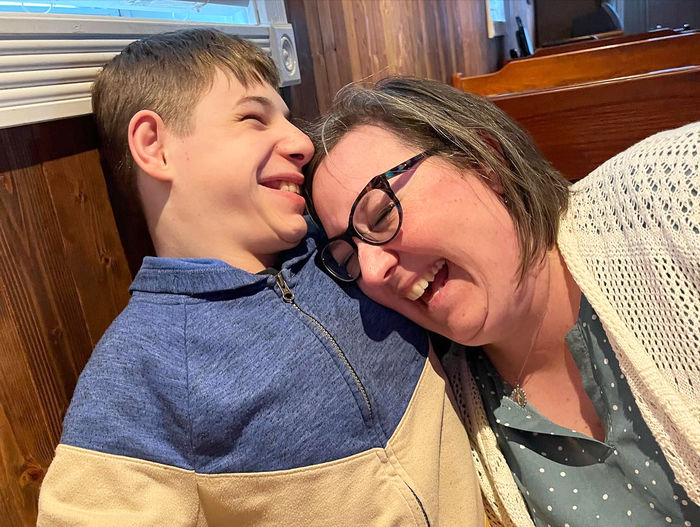
“Our family is real. It may be complicated, but we are all doing our best to make a go of it,” says Shelley. “I hope getting a personal look into our lives instills in these students a sense of compassion for others in similar situations. I hope they take away from the experience that there are real people tied to diagnoses, genetic disorders, and syndromes and that they are so much more than what is on paper.”
Flanders is thinking about a career in evolutionary biology. She says it boggles her mind to contemplate how the single nucleotide change that caused Thomas’s disorder has affected his entire system at such a magnitude. “It’s easy to get caught up in the fascination of a disease or disorder and not see the broader picture. Allowing the whole family or support system to have a voice is something I’ve come to understand more because of the Lills.”
In the following weeks, students were excited to talk with each other and Palmer about their time with Thomas and his family. They asked more questions and discussed topics like genetic testing and ethics. They brought ideas on how to adapt activities so Thomas can participate, ways to streamline his medical appointments and care, and even how the family could manage a vacation despite Thomas’s extreme rigidity to a schedule.
“It’s been interesting to watch the wheels turn for these students in and out of class,” says Palmer. “To me, that means I was able to plant seeds in their minds. I can't cure Thomas, but I can advocate for him, and this is one way I’ve been able to do that.”
There is much to learn from Thomas’s family, his condition, and from Thomas himself—lessons, gifts really, that students have already taken to their minds and hearts.
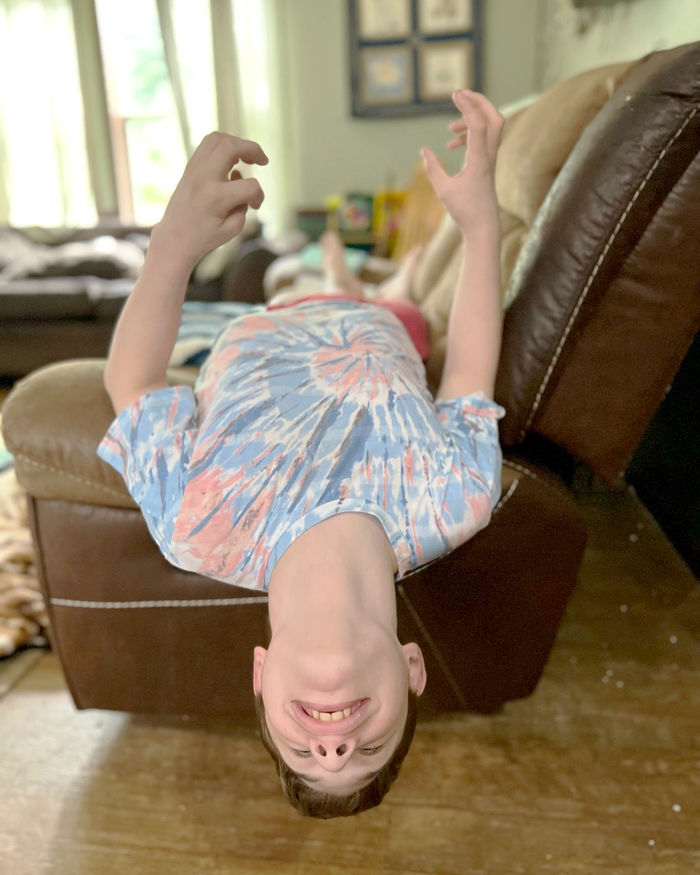
“Thomas just lives in the moment, and to see him do things he shouldn’t be able to do is just incredible and really inspiring,” says Rennell.
Scott and Shelley have invited the students to return in the summer to go swimming. Flanders is looking forward to it. “At the end of our night with Thomas, I felt like I was just hanging out with old friends. I left there wanting to keep that friendship going. I didn’t expect that, and it’s become really important to me.”
For all that has gone wrong with Thomas because of his genetic disorder, Palmer prefers to focus on what went right. What worked correctly so that he survived, and Daniel didn’t when they share the same mutation? What has gone right so that Thomas can walk and run and swim, that he can laugh and learn and love?
“I call Thomas my blessing. He grounds me in a way that nobody else does,” Palmer says. She points out that he doesn’t care about how much money someone makes, he doesn't care what clothes people wear, how many papers they’ve published or their level of success. “All Thomas cares about is that you spend time with him. He helps me remember to be present. He reminds me that human experience is about connecting, and it’s about emotion. That’s very special to me. No other person fills that role for me.”
These are Thomas’s gifts.
